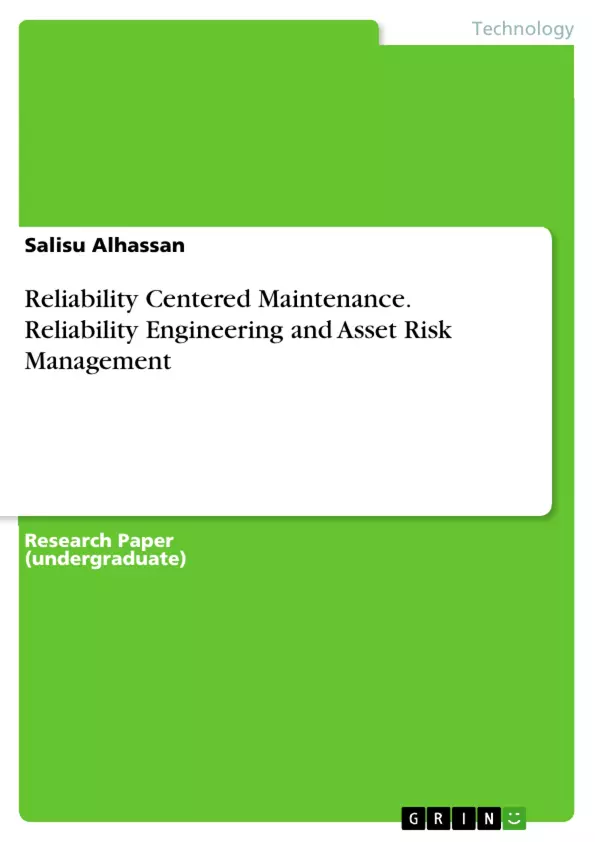This paper is going to focus on a maintenance method that provides reliability to a functional system and in a cost-effective manner, known as Reliability centered maintenance technique or RCM. RCM is simply referred to as the idea of considering the lasting reliability of a system. It includes coming up with ideas and ways of maintaining the system, and to make sure it is reliable throughout its expected life period. It encompasses adding weight to the choice of systems which is recognised to be dependable and sustainable and for which logistic sustenance is most gladly delivered. In practice this often means choosing systems that are readily accessible off-the-shelf and which are since commonly used. It also includes examining for reliability and acceptable installation at the time of acquiring the asset. Key issues are system harmony, reliability and maintainability, assessment, and acceptance testing.
Inhaltsverzeichnis (Table of Contents)
- ANSWER TO QUESTION 1.
- Serial connection Reliability block diagram (RBD) of a radar system.
- To calculate for MTBF.
- The reliability target of achieving 10,000hrs MTTF for the system.
- ANSWER TO QUESTION 2.
- CONSIDERING THE FIRST SENSOR
- CONSIDERING THE SECOND SENSOR
- ANSWER TO QUESTION 3
Zielsetzung und Themenschwerpunkte (Objectives and Key Themes)
This assignment focuses on reliability engineering and asset risk management, exploring concepts such as MTBF, reliability block diagrams, and Bayesian analysis. It aims to illustrate these concepts through practical applications.
- Reliability Analysis of a Radar System
- Fault Detection and Probability in Sensor Systems
- Simulation and Modeling for Reliability Estimation
- Redundancy Strategies for System Reliability Enhancement
- Bayesian Inference in Reliability Analysis
Zusammenfassung der Kapitel (Chapter Summaries)
ANSWER TO QUESTION 1.
This section analyzes the reliability of a radar system using a reliability block diagram (RBD). It calculates the Mean Time Between Failures (MTBF) for the system and explores methods to improve reliability through redundancy.
ANSWER TO QUESTION 2.
This section focuses on fault detection in sensor systems. It calculates the probability of a fault being reported by two different sensors using Bayes' Theorem, considering the probabilities of fault occurrence, detection, and false alarms.
ANSWER TO QUESTION 3
This section demonstrates a simulation model for reliability estimation using randomly generated numbers. It calculates the MTBF for a system based on simulated failure rates and repair times.
Schlüsselwörter (Keywords)
The main keywords and focus topics include reliability engineering, asset risk management, MTBF, reliability block diagrams, redundancy, fault detection, Bayesian analysis, simulation modeling, and sensor systems.
- Arbeit zitieren
- Salisu Alhassan (Autor:in), 2017, Reliability Centered Maintenance. Reliability Engineering and Asset Risk Management, München, GRIN Verlag, https://www.grin.com/document/367068



